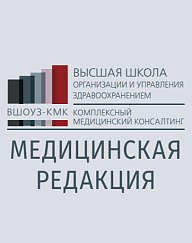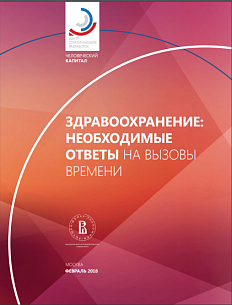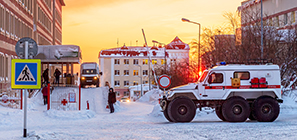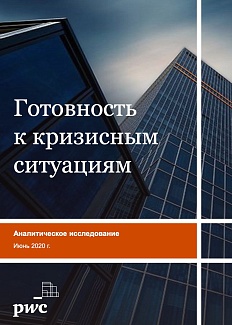This publication is regularly updated. The present version is accurate as of April 10, 2020.
General information about the origin and spread of COVID-19 (coronavirus infection caused by SARS-CoV-2)
COVID-19 is an infectious disease caused by severe acute respiratory syndrome coronavirus 2 (SARS-CoV-2) which is a strain of coronavirus. The outbreak started in late 2019 in Wuhan, People’s Republic of China (PRC) and grew into a pandemic in 2020. WHO officially named the disease COVID-19 (Coronavirus disease 2019).
Pathogenic microorganisms of this species demonstrate high persistence (they can remain for a long time in the host’s organism). Up to 2002, it was believed that coronaviruses only cause mild respiratory illness in adult humans and gastroenteritis in newborns. In 2002-2003, an outbreak of severe acute respiratory syndrome (SARS, a disease caused by SARS-CoV-1 virus) took place. In 2012, there was an outbreak of MERS (caused by MERS-СoV virus), with occasional cases reported up to now. The outbreak of COVID-19 started in China in 2019 and spread over the whole world in 2020. The International Committee on Taxonomy of Viruses (ICTV) named the virus SARS-CoV-2.
Origins of COVID-19 (coronavirus infection caused by SARS-CoV-2)
Currently, human-to-human transmission, including during the incubation period, is the primary source of infection.
The mechanism of COVID-19 origination and progress, as well as those of its separate symptoms, is insufficiently studied. The virus is supposed to enter human cells by binding to their angiotensin converting enzyme 2 (ACE2) receptors or via the transmembrane glycoprotein CD147. The primary way of cell entry remains unclear.
Once in the cell, RNA starts the process of viral replication. The virion particles attach to the plasma membrane, and the virion releases RNA into the cell. Unlike other pathogenic coronaviruses which cause seasonal viral infections, SARS-CoV-2 is replicated in upper respiratory airway without clinical symptoms.
No data about the duration or level of immunity against SARS-CoV-2 is currently available. The immunity to diseases caused by other coronaviruses is short-term, so there is a chance of reinfection.
The infection mainly spreads through air (when an infected person coughs, sneezes, or talks), dust and air movement, and physical contact. It can also be transmitted through food and objects contaminated with SARS-CoV-2.
Progression, risk groups, and diagnostics of COVID-19 (coronavirus infection caused by SARS-CoV-2)
Clinical progression patterns:
· Upper respiratory tract infection (URTI). In severe cases, acute respiratory failure (ARF) can quickly develop.
· Pneumonia (double pneumonia in most cases); respiratory failure is also possible. Hypoxemia (SpO2lower than 88%; over 30% of patients)
· Acute respiratory distress syndrome (ARDS; 3-4% of patients)
· Sepsis with septic shock (toxic shock).
Various complications, including multi-organ failure, are often observed.
Risk groups:
· People aged 60+ years.
· Immunocompromised patients (those with drug-induced immunosuppression or late-stage HIV).
· People with underlying diseases such as bronchopulmonary diseases, including asthma; cardiovascular diseases (15% of cases), including arterial hypertension (15% of cases); metabolic disorders, including diabetes (over 20% of cases); respiratory syncytial virus (in children).
· Healthcare workers.
The primary methods of laboratory diagnostics are PCR testing (samples include, among other things, pharyngeal swabs and nasopharyngeal swabs), complete blood count, biochemical blood test, etc.
Treatment of COVID-19 (coronavirus infection caused by SARS-CoV-2)
In the absence of an alternative, etiotropic therapy (causal treatment) is used. Although it demonstrates local effectiveness, there isn’t any sufficiently reliable evidence of the effectiveness of this method for COVID-19 treatment.
Most approaches to treatment are focused on symptomatic treatment and respiratory support. Nearly all patients receive oxygen therapy. For patients with refractory hypoxemia, WHO recommends extracorporeal membrane oxygenation (ECMO).
Goals of pharmacotherapy:
· normalize body temperature;
· reverse the intoxication caused by the infection;
· treat catarrhal syndrome;
· prevent or deal with complications.
Additional treatment methods include breathing exercises, remedial gymnastics, and physiotherapy.
General recommendations on how to combat the spread of COVID-19 (coronavirus infection caused by SARS-CoV-2)
The latest information about COVID-19 can be found on the official WHO website. General recommendations on how to combat the spread of COVID-19 include the following:
• avoid travelling to countries which have reported cases of COVID-19;
• avoid contact with people with respiratory symptoms (discharge from the nose, cough, sneezing, etc.);
• avoid crowded public places;
• avoid using cash; if possible, use contactless payments;
· if possible, avoid using elevators;
· if possible, avoid touching door handles, handrails, and other objects and surfaces in public places;
· avoid physical contact (handshakes, kisses, hugs) when greeting;
· wash your hands frequently with soap and water; if soap and water are inaccessible, use alcohol-based disposable tissues or moisturizing tissues;
· touch your face and eyes with well-washed hands or disposable tissues only;
· wear a single-use medical mask and disposable gloves in public places and public transport;
· air the room frequently;
· maintain a healthy lifestyle, balanced diet, and regular physical activity.






